What’s it like to be in the middle of an orchestra, hugger-mugger with the violas, looking directly over the flautist’s shoulder? Last night’s immersive concert by Sinfonia Smith Square gave the us the chance to find out, the players spread around Smith Square Hall on podiums, with the audience encouraged to wander round as the performance unfolded. It was at once a revealing but also somewhat frustrating experience.
The hour-long programme explored the plight of the UK’s temperate rainforest. You may not (I didn’t) realise the UK had any temperate rainforest, but it does – and centuries ago it occupied 20% of the country’s area. That is now 0.07%. Sound designer Matt Belcher gave us slightly New Age “sounds of the rainforest” audio between the musical items, with some narration about efforts to save what is left of it. At one point we heard a powersaw cutting down a tree, at which point the players slowly descended to the floor, in a slightly eggy, GCSE Drama moment, only to rise again for the final item.
The music followed a similar contour. Dobrinka Tabakova’s The Patience of Trees, a mini-violin concerto, is has a broadly uplifting shape, from an inchoate opening out of which soloist Emma Purslow’s insistent figuration emerged. Mendelssohn’s Midsummer Night’s Dream Overture is likewise life-affirming. Vagn Holmboe’s peculiar Prelude to the Pollution of Nature initiated the sense of decline only for Nadia Boulanger’s piano solo Vers la vie nouvelle (beautifully played by Zeynep Özsuca Rattle) to mark a re-ascendancy, which was rounded off by Michael Nyman’s assertive Strong of Oaks, Strong on the Causes of Oaks.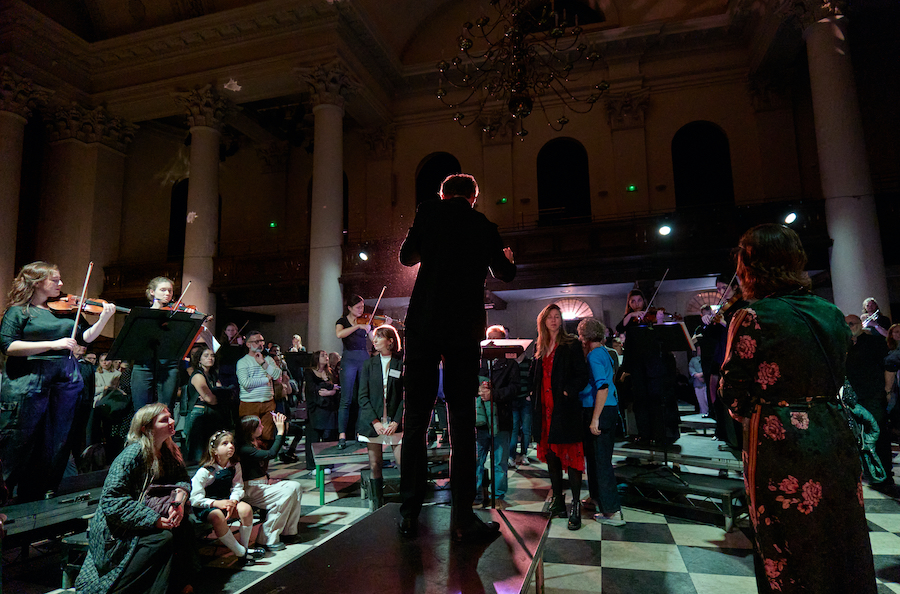 This musical narrative was the concert’s biggest strength, paced very effectively by conductor Maxime Tortelier (pictured above by Sophie Oliver) who managed to find some interpretative subtlety (above all in the Tabakova) while he was, by necessity, at times something of a director-of-traffic. And this comes to the biggest problem: it is difficult enough getting an orchestra to play together when they are seated alongside each other, and tight ensemble becomes nigh-on impossible when the players are dispersed and punters are constantly wandering through the sightlines.
This musical narrative was the concert’s biggest strength, paced very effectively by conductor Maxime Tortelier (pictured above by Sophie Oliver) who managed to find some interpretative subtlety (above all in the Tabakova) while he was, by necessity, at times something of a director-of-traffic. And this comes to the biggest problem: it is difficult enough getting an orchestra to play together when they are seated alongside each other, and tight ensemble becomes nigh-on impossible when the players are dispersed and punters are constantly wandering through the sightlines.
And some of the music was particularly unforgiving in this regard. The fast violin passagework of the Mendelssohn, the arpeggiated figuration of the second movement of the Tabakova, the finale of the Nyman: in the best circumstances these would all be difficult to get together, and here they often weren’t. But this isn’t to dismiss the (excellent) players or the project altogether: for everything that was lost in rhythmic unanimity there was a gain for the audience member getting a unique insight into the musical innards.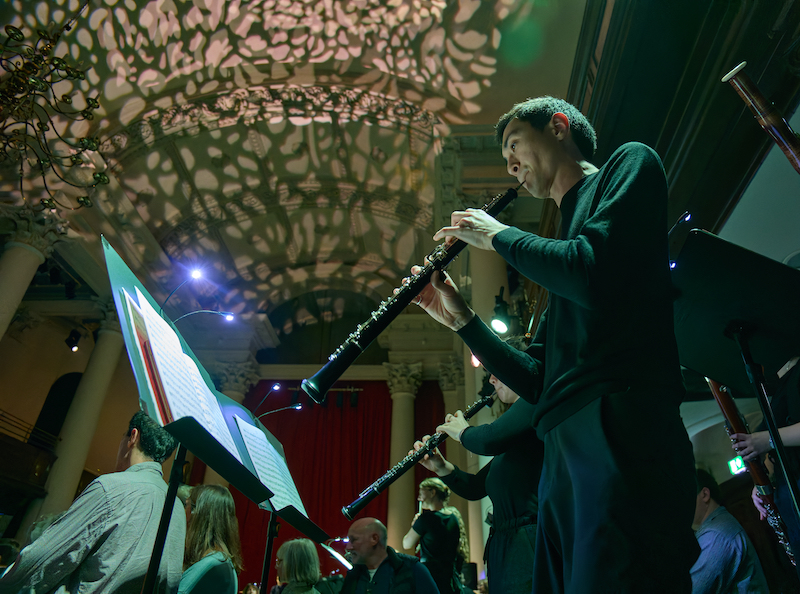 This was most obvious in the Mendelssohn, where the familiarity of the piece meant the fresh perspectives were all the fresher. I spent some time by the violas, and by the basses, and heard things I’d never heard before. Less successful was standing by the timpani – you could hear little else – or the horns. Some people opted to sit at the periphery, for a more normally balanced sound, and I can understand that, but for me it was best enjoyed by moving from place to place. Most exhilarating was standing between the conductor and the strings, enjoying literal surround-sound.
This was most obvious in the Mendelssohn, where the familiarity of the piece meant the fresh perspectives were all the fresher. I spent some time by the violas, and by the basses, and heard things I’d never heard before. Less successful was standing by the timpani – you could hear little else – or the horns. Some people opted to sit at the periphery, for a more normally balanced sound, and I can understand that, but for me it was best enjoyed by moving from place to place. Most exhilarating was standing between the conductor and the strings, enjoying literal surround-sound.
Sinfonia Smith Square – until recently the Southbank Sinfonia – is an ensemble for young professionals, and this toying with concert protocols is absolutely something they should be doing. And the audience was notably younger than for most orchestral concerts. The music choices were obviously driven by the theme, otherwise I’m not sure that Nyman’s Strong on Oaks… would really be worthy of programming. It’s not one of his best. Likewise the Holmboe, oddly disjointed, is not something I will rush to hear again. But the Tabakova, with its echoes of Vaughan Williams and Arvo Pärt, held the attention, and the Mendelssohn is as evergreen as the trees in the forest.

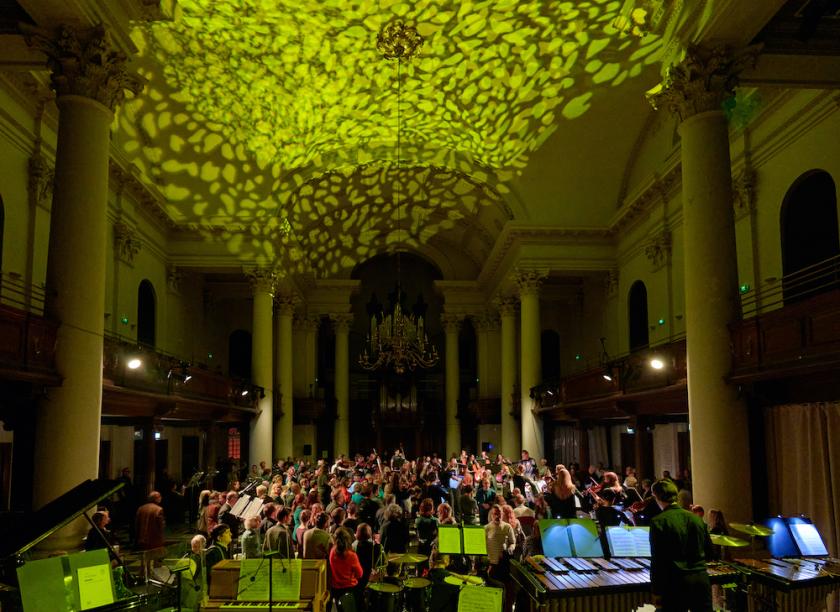


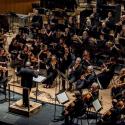
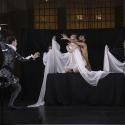
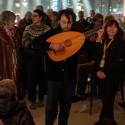
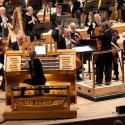






Add comment